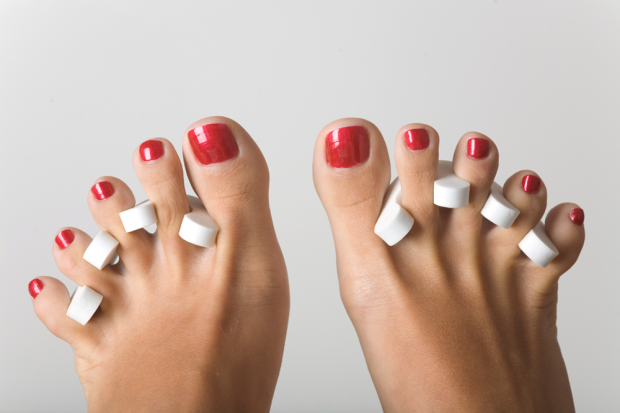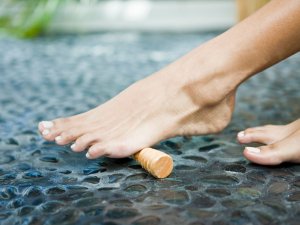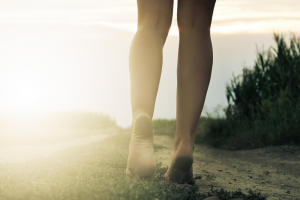Stretch It Out Do Yoga Toes and Toe Stretchers Really Help Foot Pain? Experts Say Yes!
Toe separators like the popular yoga toes claim to stretch and exercise bunion and plantar fasciitis foot pain away, and it seems the toe stretching devices truly work.
Toe stretchers are all the rage right now, with patients suffering from bunions, plantar fasciitis, neuromas, hammertoes and other painful foot issues buying them up like hotcakes. But are separators like Yoga Toes and Profoot Flex-tastic Toe Relaxers really your best bet against foot pain? Most podiatrists say yes, they do have the ability to help.
Yoga Toes And Toe Stretchers Demystified: What They Are And How They Work
Toe stretchers and separators are devices that sit between your toes and spread, stretch and exercise the muscles, tendons, ligaments and joints of the toes. They are usually worn while a person is relaxing (sleeping, watching TV, etc.) and are said to increase the flexibility and length of the toes, which can help relieve pain from foot conditions like arthritis, gout, bunions, claw toe, bone spurs, plantar fasciitis, cramps, hammertoes, Morton’s neuroma, metatarsalgia and more. Additionally, toe separators have the ability to improve circulation, realign joints and straighten bent toes, which can also help with foot pain.
Other benefits of toe spreaders and separators include their ability to improve balance, gait, posture and the overall appearance of the foot.
Types of Toe Stretchers: Yoga Toes And Beyond
There are many brands of toe stretchers on the market, but they generally are only offered in two different styles: a traditional gel stretcher made of plastic or silicone and toe stretcher socks that are worn like conventional socks.
Some popular traditional toe spacer brands include The Original Yoga Toe, The Yoga Toe Sport, Correct Toes, Yoga Toe Gems, and Great Value Toe Stretchers.
Toe separating sock brands include Happy Feet Socks and Comfy Toes.
How To Wear Yoga Toes And Other Toe Separators
Contrary to popular belief, toe spacing devices are meant to be worn while a person is resting rather than when they’re being active. Most people wear them while they’re sleeping, working, reading a book or watching TV.
The companies that produce toe stretchers say you should start out by wearing your gel toe stretchers or sock stretchers about 15 minutes per day, and gradually increase your daily toe stretching time to at least one hour per day for best results. Rushing right into wearing the separators for long periods of time can lead to uncomfortable foot and toe cramps.
READ ALSO: Causes, Treatment and Prevention of Toe Cramps
If worked into gradually, toe spreaders should not cause any pain or extreme discomfort. If you do experience any pain, you should visit a podiatrist as soon as possible.
Reviews About Toe Stretchers: What Podiatrists Say
Though there has been no credible evidence that toe stretchers like Yoga Toes can help heal common foot issues like bunions, Morton’s neuroma, plantar fasciitis and arthritis, many podiatrists agree they are gentle enough for every day use and can help ease foot pain related to many common foot issues. So while they can't completely rid a person of a foot ailment, they can help significantly decrease foot pain.
However, anyone experiencing foot pain should first make an appointment with his or her podiatrist or foot doctor before using toe stretching products. “If you have a structural problem, a $6 device isn’t going to reverse anything,” states a Readers Digest article. “You’ve got to come to [your podiatrist] for that.”
Notice concerning medical entries:
Articles having medical content shall serve exclusively for the purpose of general information. Such articles are not suitable for any (self-) diagnosis and treatment of individual illnesses and medical indications. In particular, they cannot substitute for the examination, advice, or treatment by a licensed physician or pharmacist. No replies to any individual questions shall be effected through the articles.







